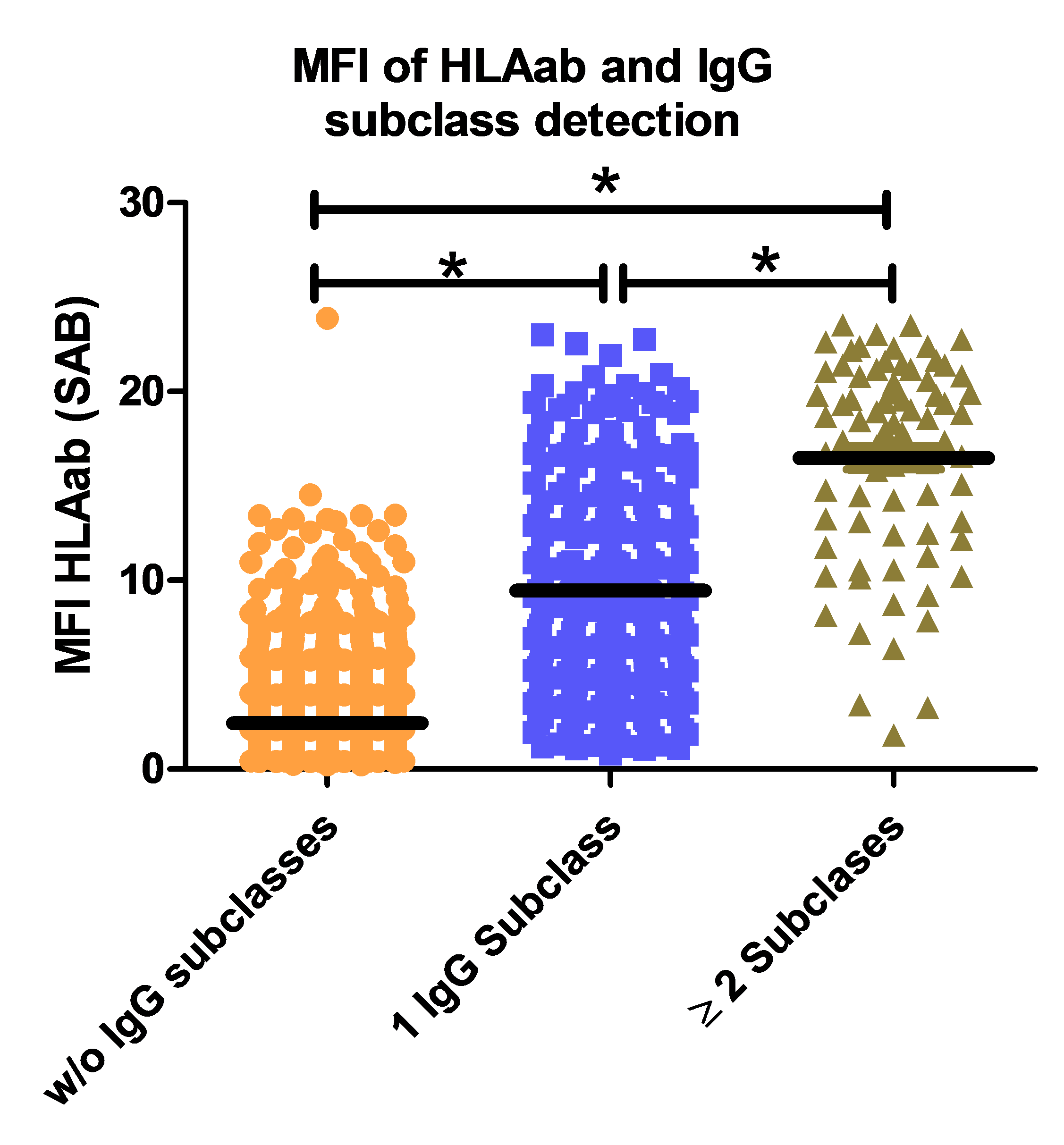Characterization of HLA Antibodies by C3d Assay and IgG Subclasses in Sensitized Kidney Transplant Patients
Instituto Nacional de Ciencias Medicas y Nutricion SZ, Mexico City, Mexico
Meeting: 2019 American Transplant Congress
Abstract number: A155
Keywords: Highly-sensitized, HLA antibodies, IgG, Monoclonal antibodies
Session Information
Session Name: Poster Session A: Biomarkers, Immune Monitoring and Outcomes
Session Type: Poster Session
Date: Saturday, June 1, 2019
Session Time: 5:30pm-7:30pm
 Presentation Time: 5:30pm-7:30pm
Presentation Time: 5:30pm-7:30pm
Location: Hall C & D
*Purpose: To determine the detection rate of IgG subclasses (IgGsc) and C3d-binding HLA-antibodies (abs) in a cohort of highly sensitized kidney transplant patients.
*Methods: We evaluated, in cryopreserved sera from 90 potential renal transplant recipients, HLA-abs Class I and Class II using single antigen beads (SAB). C3d was detected by Luminex (Lifecodes®), IgG 1-4 subclasses were evaluated using monoclonal abs for each IgGsc (Luminex).
*Results: The SAB were able to reveal 1,684 abs, additionally 63 were only detected by C3d assay and 24 by IgGsc (n=1771).The IgGsc assay showed 367 abs with at least one IgGsc, the most common was IgG1 alone or associated with other subclasses (351, 75.6%); only 7 IgG2 and 9 IgG3 were found isolated form IgG1. IgG4 was identified in 17 abs, always in combination with IgG1. A MFI >4000 of the HLA-SAB was directly related with the detection of one or more IgGsc (*p=<0.001). Figure 1.The C3d assay exposed 216 complement-binding abs; 128 of these were identified in the IgGsc as well. Table 1 depict a more detailed analysis of each Class I and Class II category, its IgG detection and C3d-binding capacity.A multivariate analysis using different models showed that the best predictors of IgGsc detection were: finding an HLA-DQ ab and the positivity of the C3d assay (OR, (CI 95%) 1.72 (1.18-2.51), p= 0.004 and 7.41 (5.4-10.1), p= <0.001). Comparatively, finding ≥2 IgGsc was the best predictor for a positive C3d.
*Conclusions: The ability of the IgG monoclonal abs to detect IgGsc depends on the MFI of the HLA-SAB; a high MFI improves the assessment of IgGsc. The HLA-DQ abs that were C3d positive had a higher probability of detection of IgGsc than any other combination. The classification of abs as one or more IgGsc increases the risk of these being C3d positive.
|
All Abs (n=1771) |
IgG subclasses Detection (n=367) | Positive C3d assay (n=216) | |
| HLA-Ab Class II, n (%) | 636 (35.91) | 116 (31.6) | 161 (74.5) |
| HLA A, n (%) | 291 (16.43) | 69 (18.8) | 23 (10.6) |
| HLA B, n (%) | 566 (31.96) | 145 (39.51) | 22 (10.1) |
| HLA C, n (%) | 278 (15.7) | 37 (10.08) | 10 (4.63) |
| HLA DP, n (%) | 156 (8.81) | 1 (0.27) | 12 (5.56) |
| HLA DQ, n (%) | 170 (9.6) | 63 (17.17) | 52 (24.07) |
| HLA DR, n (%) | 310 (17.5) | 52 (14.17) | 97 (44.9) |
To cite this abstract in AMA style:
Casillas-Abundis A, Arreola-Guerra JM, Alberu J, Solis-G MI, Llorente L, Granados J, Vilatoba M, Cruz-Martinez R, Morales-Buenrostro L, Contreras AG. Characterization of HLA Antibodies by C3d Assay and IgG Subclasses in Sensitized Kidney Transplant Patients [abstract]. Am J Transplant. 2019; 19 (suppl 3). https://atcmeetingabstracts.com/abstract/characterization-of-hla-antibodies-by-c3d-assay-and-igg-subclasses-in-sensitized-kidney-transplant-patients/. Accessed July 18, 2025.« Back to 2019 American Transplant Congress

